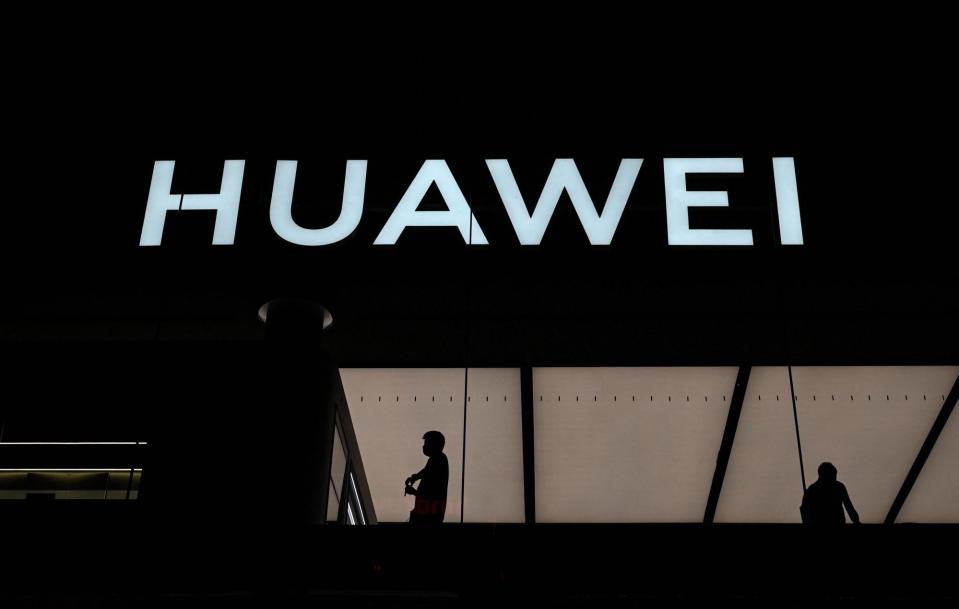New Nvidia Blackwell GPUs put China further behind global leading edge in AI chips amid US sanctions
The gap between China and the US in leading artificial intelligence (AI) chip technology is set to widen further, after Nvidia founder and chief executive Jensen Huang unveiled next-generation processors for what he called a new era of generative AI and robotics used in industries.
In a keynote speech on Sunday ahead of the Computex trade show in Taiwan that runs from June 4 to 7, the 61-year-old billionaire said computers are "no longer just an instrument for information storage or data processing, but a factory for generating intelligence for every industry."
Nvidia plans to upgrade its AI accelerators - processors designed to efficiently process AI tasks - every year, and the next-generation Blackwell Ultra is expected to be released next year, succeeding the Blackwell platform chips unveiled in March.
Do you have questions about the biggest topics and trends from around the world? Get the answers with SCMP Knowledge, our new platform of curated content with explainers, FAQs, analyses and infographics brought to you by our award-winning team.
Blackwell platform chips are expected to enter the market in the third quarter and take up just under 10 per cent of the high-end graphics processing unit (GPU) market, according to a note by Taipei-based research firm TrendForce.
"Nvidia is proactively pushing its AI technologies to meet global demand," said Arisa Liu, a semiconductor research director at the Taiwan Institute of Economic Research, adding that Nvidia's new chip architecture, Rubin, will adopt Taiwan Semiconductor Manufacturing Company (TSMC)'s 4-nanometre process.
Many of the semiconductors and servers that enable AI breakthroughs are assembled or made by TSMC.
Silicon Valley-based Nvidia is on track to overtake Apple as the world's second-most valuable technology company, with its shares having surged over 120 per cent to US$1,095.95 since the beginning of this year.
However, the chip designer's business in China is facing mounting challenges amid US export restrictions on advanced semiconductor technology and rising competition from local firms led by Huawei Technologies.
Nvidia's most powerful Blackwell line, including the B100, B200 and GB200, adds to a growing list of GPU models that are barred by the US from being shipped to China, the company's third-largest market by revenue last year.
Washington's embargo and Nvidia's continuous technological advancement will put China further behind the world's leading edge in AI infrastructure, according to industry analysts and professionals.
While China has earmarked 344 billion yuan (US$47.5 billion) for the latest phase of its state-backed semiconductor investment fund to speed up its national self-sufficiency drive, many industry professionals said limited GPU choices, lack of access to advanced chip manufacturing, and an underdeveloped software ecosystem have made it difficult to rely on domestic AI solutions.
Huawei and Chinese start-up Biren Technology, which produce some of the country's most reputable home-grown AI chips, are both on the US trade blacklist, forcing them to turn to domestic foundries to produce their chips using less advanced manufacturing processes.
China's top foundry, Semiconductor Manufacturing International Corporation (SMIC), which is also sanctioned by the US, faces bottlenecks in adding more advanced capacities needed to make AI chips.

A Huawei flagship store in Shenzhen, China's southern Guangdong province. Photo: AFP alt=A Huawei flagship store in Shenzhen, China's southern Guangdong province. Photo: AFP>
Huawei's Ascend 910B chip, which has been adopted by various industries in China, is only able to achieve about 60 to 70 per cent of Nvidia A100's performance, according to multiple computation experiments.
Many home-grown chips are behind Nvidia's in performance and stability, according to one researcher at China's server maker H3C, who said that the lag affects China's development of large AI models. The person, who declined to be named as he was not authorised to speak to the media, said H3C tested various GPUs, including those from Cambricon, Iluvatar Corex and Huawei.
Huawei is striving to improve its technology. The Shenzhen-based giant, which staged a comeback in the 5G smartphone market last year using chips produced by SMIC, is developing a 5-nm process node using deep ultraviolet lithography systems and a technology known as self-aligned quadruple patterning, according to a Bloomberg report in March.
More advanced chip-making technologies can improve performances and lower power consumption of high-end chips.
However, it was not easy for China to achieve 7-nm chip production, and there is only a small likelihood that China can progress quickly to more advanced 5nm or 3nm nodes, said Zhang Pingan, CEO of Huawei Cloud, during a recent China Mobile conference.
Huawei's ecosystem is also less developed than Nvidia's CUDA, which has become an essential AI development platform used by some 5 million developers globally. Huawei's equivalent, in contrast, has a much smaller use base worldwide.
This article originally appeared in the South China Morning Post (SCMP), the most authoritative voice reporting on China and Asia for more than a century. For more SCMP stories, please explore the SCMP app or visit the SCMP's Facebook and Twitter pages. Copyright © 2024 South China Morning Post Publishers Ltd. All rights reserved.
Copyright (c) 2024. South China Morning Post Publishers Ltd. All rights reserved.

 Yahoo Finance
Yahoo Finance 